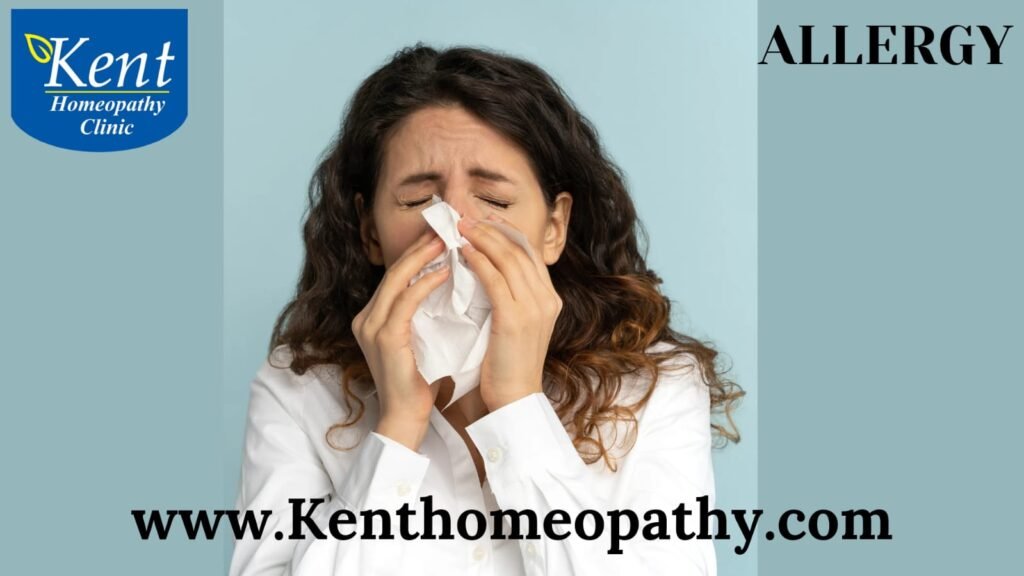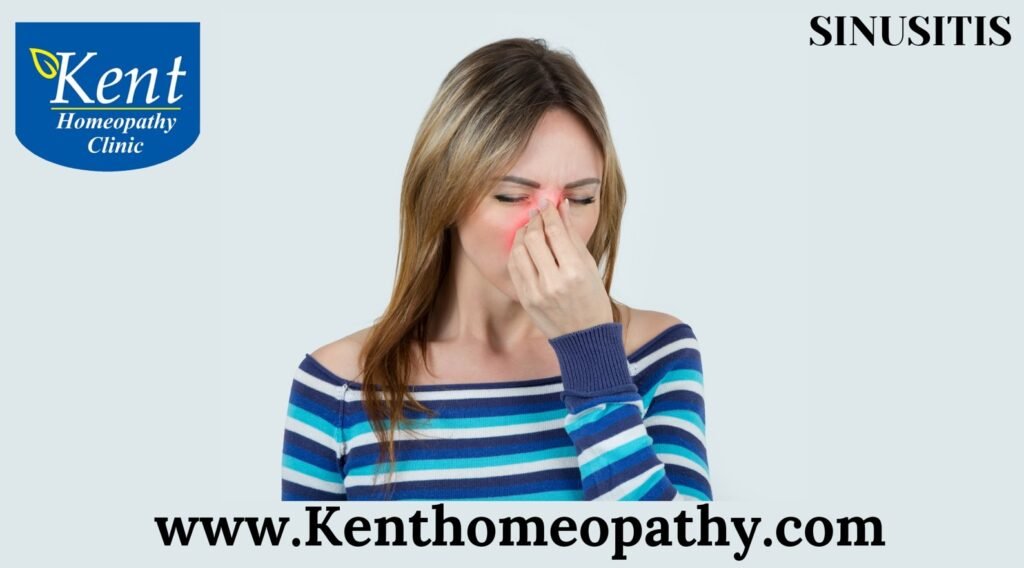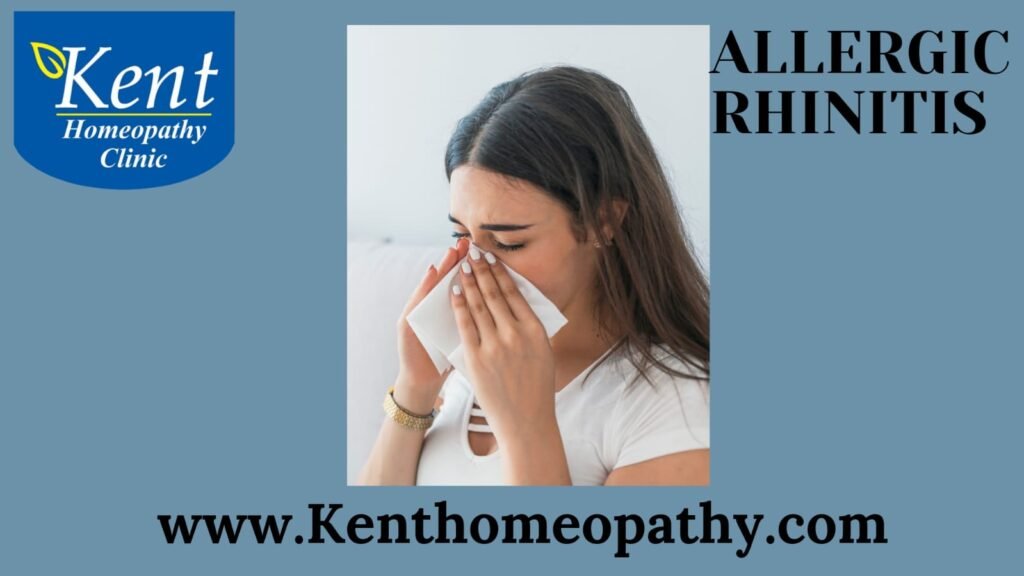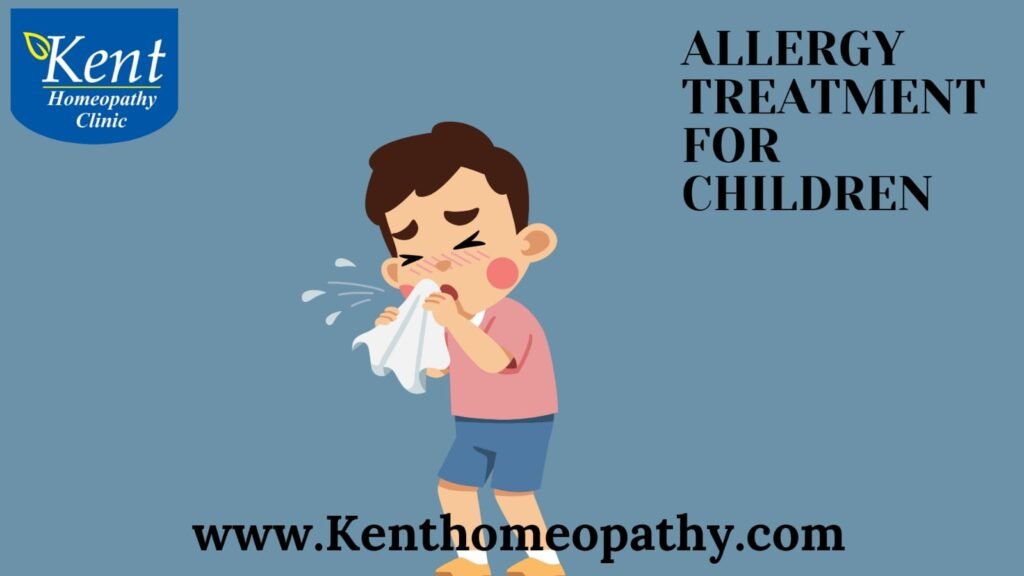Allergy

Allergy: Unraveling Symptoms, Causes, and Types
An allergy is an abnormal immune response to substances that are typically harmless. These substances, known as allergens, can trigger an exaggerated immune reaction in sensitive individuals. Allergies can manifest in various ways, affecting the respiratory system, skin, digestive system, or other parts of the body.
Symptoms:
- Respiratory Symptoms:
– Sneezing and Runny Nose: Common manifestations, especially in response to airborne allergens like pollen, dust, or pet dander.
– Coughing and Wheezing: Allergies can trigger or exacerbate respiratory conditions such as asthma, leading to coughing and wheezing.
- Skin Symptoms:
– Rashes and Hives: Allergic reactions can cause red, itchy rashes or raised welts on the skin.
– Eczema: Chronic inflammation of the skin, often presenting as dry, itchy patches.
- Gastrointestinal Symptoms:
– Nausea and Vomiting: Certain food allergies may lead to nausea and vomiting shortly after ingestion.
– Abdominal Pain and Diarrhea: Digestive allergies can cause discomfort, cramping, and diarrhea.
- Anaphylaxis:
– A severe, life-threatening allergic reaction that can rapidly progress. Symptoms include difficulty breathing, a sudden drop in blood pressure, and swelling of the face and throat.
- Ocular Symptoms:
– Watery Eyes: Allergies can cause excessive tearing and redness in the eyes.
– Itchy Eyes: Persistent itching and discomfort are common eye symptoms.
Types of Allergies:
- Seasonal Allergies (Hay Fever): Typically caused by airborne allergens like pollen from trees, grasses, and weeds. Symptoms often worsen during specific seasons.
- Perennial Allergies: Triggered by year-round allergens, such as dust mites, pet dander, mold spores, and cockroach droppings.
- Food Allergies:
– Common Allergens: Include peanuts, tree nuts, eggs, milk, soy, wheat, fish, and shellfish.
– Immediate Reactions: Can range from mild symptoms to severe anaphylaxis.
- Insect Sting Allergies:
– Reactions to stings from bees, wasps, hornets, or fire ants can range from mild swelling to severe, systemic reactions.
- Drug Allergies:
– Antibiotics: Penicillin and other antibiotics can cause allergic reactions.
– NSAIDs: Nonsteroidal anti-inflammatory drugs like aspirin and ibuprofen can trigger allergies.
- Latex Allergy:
– Sensitivity to latex, found in certain gloves, condoms, and medical devices. Reactions can range from skin irritation to anaphylaxis.
- Contact Dermatitis:
– Skin reaction to direct contact with an allergen, such as certain metals, plants (like poison ivy), or cosmetics.
Causes:
- Genetic Predisposition: Family history plays a role, with a higher likelihood of allergies in individuals with allergic parents.
- Environmental Exposure: Regular exposure to allergens can sensitize the immune system, leading to allergic reactions upon subsequent encounters.
- Hygiene Hypothesis: Lack of early childhood exposure to microbes and infections may contribute to an increased risk of developing allergies.
- Immune System Dysfunction: Allergies result from an immune system overreaction to otherwise harmless substances, producing antibodies like immunoglobulin E (IgE) that trigger allergic symptoms.
- Cross-Reactivity: Some individuals may react to allergens that share similar proteins with substances they are already allergic to, a phenomenon known as cross-reactivity.
- Environmental Changes: Urbanization, pollution, and climate changes can influence the types and concentrations of allergens in the environment.
In conclusion, allergies encompass a diverse range of conditions with distinct symptoms and triggers. Understanding the causes and types of allergies is crucial for effective management and improving the quality of life for individuals dealing with allergic reactions.
Cold and Cough

Cold and cough are common respiratory illnesses often caused by viral infections. These conditions affect the upper respiratory tract and can result in symptoms such as nasal congestion, sneezing, coughing, and sore throat. While cold and cough symptoms can overlap, they are distinct entities with varying causes.
Symptoms:
- Nasal Congestion: Blockage or stuffiness in the nasal passages.
- Runny Nose: Excessive production of mucus, leading to a runny or dripping nose.
- Sneezing: The body’s response to irritants or infection in the nasal passages.
- Coughing: A common symptom that helps clear the airways of irritants or mucus.
- Sore Throat: Irritation or pain in the throat, often exacerbated by coughing.
- Headache: Some individuals may experience headaches due to sinus congestion.
- Mild Fatigue: Feeling tired or lethargic is common during a cold.
Causes:
- Viral Infections: The majority of colds and coughs are caused by viruses, with rhinoviruses being the most common culprits. Other viruses, such as coronaviruses or influenza viruses, can also cause similar symptoms.
- Bacterial Infections: While less common, bacterial infections like streptococcal bacteria can lead to sore throat and cough. Antibiotics are typically prescribed for bacterial infections, but they are not effective against viral infections.
- Allergies: Exposure to allergens like pollen, dust, or pet dander can trigger cold-like symptoms.
- Environmental Irritants: Tobacco smoke, air pollution, or strong odors can irritate the respiratory tract, leading to cough and cold-like symptoms.
- Postnasal Drip: Excess mucus dripping down the back of the throat can cause irritation and cough.
Types:
- Common Cold: Caused by various viruses, the common cold is characterized by mild symptoms such as runny nose, sneezing, and coughing. It is usually self-limiting and resolves within a week or two.
- Influenza (Flu): Influenza is a viral respiratory infection that can cause symptoms similar to a cold but is often more severe. It may be associated with high fever, body aches, and fatigue.
- Allergic Rhinitis: Also known as hay fever, allergic rhinitis is caused by exposure to allergens and leads to symptoms like sneezing, runny nose, and itchy eyes. It is not caused by viruses.
- Acute Bronchitis: Inflammation of the bronchial tubes, often following a cold or respiratory infection, leading to coughing and chest discomfort.
- Strep Throat: A bacterial infection caused by Streptococcus bacteria, presenting with symptoms like sore throat, fever, and difficulty swallowing.
Eosinophilia

Eosinophilia is a medical condition characterized by an elevated level of eosinophils, a type of white blood cell, in the peripheral blood. While eosinophils are a normal part of the immune system and play a role in defending the body against certain infections, an increase in their numbers can be indicative of various underlying conditions.
Symptoms: The symptoms of eosinophilia can vary depending on the underlying cause and the organs affected. Common symptoms may include:
- Fatigue: Generalized tiredness and weakness.
- Fever: Eosinophilia can be associated with fever in some cases.
- Skin Manifestations: Itchy skin rashes, hives, or other dermatological issues.
- Respiratory Symptoms: Cough, shortness of breath, wheezing, or other respiratory symptoms may occur.
- Gastrointestinal Symptoms: Abdominal pain, diarrhea, or other digestive issues may be present.
Causes:
- Allergies: Allergic reactions to substances such as pollen, foods, or medications can trigger eosinophilia.
- Parasitic Infections: Certain parasitic infections, such as helminth infections, can cause an increase in eosinophils.
- Autoimmune Disorders: Conditions like eosinophilic granulomatosis with polyangiitis (EGPA) and hypereosinophilic syndrome (HES) involve an autoimmune response leading to eosinophilia.
- Asthma: Eosinophilia is often associated with asthma, a chronic inflammatory respiratory condition.
- Skin Disorders: Some skin disorders, including eczema and dermatitis herpetiformis, may be linked to eosinophilia.
Types:
- Reactive (Secondary) Eosinophilia: This type is a response to various underlying conditions such as allergies, infections, or autoimmune disorders.
- Primary Eosinophilia Syndromes:
- Hypereosinophilic Syndrome (HES): A rare disorder where eosinophils accumulate in various tissues and organs, leading to damage.
- Eosinophilic Asthma: Eosinophils play a prominent role in the inflammation seen in asthma, especially in cases known as eosinophilic asthma.
- Eosinophilic Esophagitis (EoE): Inflammation of the esophagus characterized by eosinophilic infiltration.
- Drug-Induced Eosinophilia: Certain medications, including antibiotics and nonsteroidal anti-inflammatory drugs (NSAIDs), can induce eosinophilia as an adverse reaction.
- Parasitic Eosinophilia: Infections with parasitic organisms can trigger an increase in eosinophils as part of the immune response.
Management of eosinophilia is individualized based on the specific underlying condition and its severity. Regular monitoring and collaboration with healthcare professionals are essential for effective treatment and improved outcomes.
Food allergies

Food allergies are immune system responses to proteins in certain foods, and they can vary widely in severity. When the immune system mistakenly identifies a particular food protein as harmful, it triggers an allergic reaction. Common food allergens include nuts, shellfish, eggs, milk, and certain fruits. Understanding the symptoms, causes, and types of food allergies is crucial for accurate diagnosis and management.
Symptoms:
- Skin Reactions: Itching, hives, eczema, or swelling, especially around the face, lips, or eyes.
- Gastrointestinal Symptoms: Abdominal pain, nausea, vomiting, diarrhea, or other digestive issues.
- Respiratory Symptoms: Sneezing, runny nose, congestion, coughing, wheezing, or shortness of breath.
- Cardiovascular Symptoms: Rapid or weak pulse, low blood pressure, or in severe cases, anaphylaxis.
- Anaphylaxis: A severe, life-threatening allergic reaction that can involve a combination of symptoms, including difficulty breathing, a drop in blood pressure, and loss of consciousness.
Causes:
- Immune System Misidentification: Food allergies occur when the immune system mistakenly identifies certain proteins in foods as harmful invaders, leading to an immune response.
- Genetic Factors: There is a genetic predisposition to developing allergies, and individuals with a family history of allergies may be at a higher risk.
- Environmental Factors: Exposure to environmental allergens may increase the risk of developing food allergies.
- Timing of Introduction of Foods: Introducing certain foods too early or too late during infancy may influence the development of allergies.
Types:
- IgE-Mediated Allergies: This is the most common type of food allergy. The immune system produces immunoglobulin E (IgE) antibodies in response to a specific food protein, leading to an allergic reaction. Symptoms can range from mild to severe and may include anaphylaxis.
- Non-IgE-Mediated Allergies: These reactions involve the immune system but do not necessarily produce IgE antibodies. They often result in delayed symptoms, such as gastrointestinal issues or eczema.
- Cross-Reactivity (Cross-Contact): Some individuals may experience allergic reactions to similar proteins in different foods. For example, a person allergic to birch pollen may also react to certain fruits or nuts.
- Oral Allergy Syndrome: This is a type of food allergy that typically causes itching or swelling in the mouth and throat after consuming certain raw fruits, vegetables, or nuts. It is often associated with pollen allergies.
- Exercise-Induced Food Allergy: Some individuals may experience allergic reactions to certain foods only when exercising. This is known as exercise-induced food allergy.
Food allergies require careful management, and individuals diagnosed with a food allergy should work closely with healthcare providers to develop a comprehensive plan for prevention and treatment of allergic reactions. Education about reading food labels, identifying potential sources of allergens, and having an emergency action plan in place is essential for those with food allergies and their caregivers.
Frequent cold

Frequent colds, also known as recurrent upper respiratory infections, can be a common concern for many individuals. Here’s an overview of the symptoms, causes, and types of frequent colds:
Symptoms of Frequent Colds:
- Runny Nose: Persistent nasal discharge is a common symptom.
- Sneezing: Frequent bouts of sneezing may occur due to nasal irritation.
- Coughing: A persistent cough may be present, often accompanied by throat irritation.
- Fatigue: Frequent colds can lead to general feelings of tiredness and weakness.
- Sore Throat: Irritation and discomfort in the throat are typical symptoms.
- Headache: Some individuals may experience headaches as a result of nasal congestion.
- Low-grade Fever: Mild elevation in body temperature can accompany frequent colds.
Causes of Frequent Colds:
- Viral Infections: The most common cause is viral infections, such as rhinovirus or coronaviruses.
- Weakened Immune System: Individuals with compromised immune systems are more prone to frequent colds.
- Environmental Factors: Exposure to cold weather or abrupt temperature changes can contribute.
- Allergies: Allergic reactions to pollen, dust, or pet dander may increase susceptibility to colds.
- Smoke Exposure: Tobacco smoke or environmental pollutants can irritate the respiratory system.
Types of Frequent Colds:
- Common Cold: Caused by various viruses, the common cold is characterized by nasal congestion, sneezing, and mild symptoms.
- Flu (Influenza): While similar to a cold, the flu is often more severe, with high fever, body aches, and fatigue.
- Allergic Rhinitis: Although not an infection, allergies can mimic cold symptoms with persistent sneezing, runny nose, and congestion.
- Chronic Sinusitis: Inflammation of the sinuses can lead to recurrent cold-like symptoms, including nasal congestion and facial pain.
- Adenoiditis: Inflammation of the adenoids, which are glands located at the back of the nasal cavity, can cause recurrent cold symptoms in children.
If frequent colds persist or worsen, it’s crucial to consult with a healthcare professional for a thorough evaluation and appropriate management.
Sinusitis

Sinusitis: Unraveling Symptoms, Causes, and Types
Sinusitis, commonly known as a sinus infection, is an inflammation of the sinuses, the air-filled cavities around the nasal passages. This condition can be acute, lasting a short time, or chronic, persisting for an extended period. Understanding the symptoms, causes, and types of sinusitis is essential for proper diagnosis and effective management.
Symptoms:
- Facial Pain or Pressure:
– One of the hallmark symptoms of sinusitis is pain or pressure in the face, particularly around the forehead, cheeks, and eyes. This discomfort may worsen when bending over.
- Nasal Congestion:
– Sinusitis often leads to nasal congestion, causing difficulty in breathing through the nose. The congestion may be accompanied by a reduced sense of smell.
- Nasal Discharge:
– Thick, discolored nasal discharge is common in sinusitis. The color may range from yellow to green, indicating the presence of infection.
- Coughing:
– A persistent cough, especially when lying down or at night, may occur due to postnasal drip caused by sinus drainage.
- Sore Throat:
– Drainage from the sinuses can irritate the throat, leading to a sore throat.
- Headache:
– Sinus headaches are often described as a constant, dull pain that can be aggravated by movement.
- Fatigue:
– The body’s response to infection, coupled with difficulty breathing and poor sleep quality, can contribute to fatigue.
- Bad Breath:
– Foul-smelling breath can result from the infection and drainage associated with sinusitis.
Causes:
- Viral Infections:
– The majority of acute sinusitis cases are caused by viral infections, typically resulting from the common cold or influenza.
- Bacterial Infections:
– Bacterial infections, often secondary to viral infections, can contribute to the development of acute or chronic sinusitis. Common bacteria include Streptococcus pneumoniae and Haemophilus influenzae.
- Allergies:
– Allergic reactions to airborne particles, such as pollen, dust mites, or pet dander, can lead to inflammation of the sinuses, contributing to chronic sinusitis.
- Nasal Polyps:
– Nasal polyps are noncancerous growths that can block the nasal passages and contribute to chronic sinusitis. They are associated with inflammation and irritation of the sinuses.
- Deviated Septum:
– A deviated septum, a shift in the nasal septum that divides the nostrils, can obstruct the sinus passages and contribute to sinusitis.
- Respiratory Tract Infections:
– Infections affecting the respiratory tract, such as bronchitis or pneumonia, can sometimes spread to the sinuses, causing sinusitis.
- Immune System Disorders:
– Conditions that compromise the immune system, such as HIV/AIDS or autoimmune diseases, can increase susceptibility to sinus infections.
Types:
- Acute Sinusitis:
– Acute sinusitis is a short-term inflammation of the sinuses, often triggered by a viral infection. Symptoms typically last less than four weeks.
- Chronic Sinusitis:
– Chronic sinusitis lasts for more than 12 weeks, and symptoms may persist or recur despite attempts at treatment. It is often associated with factors like nasal polyps, allergies, or anatomical issues.
- Recurrent Sinusitis:
– Recurrent sinusitis involves multiple episodes of acute sinusitis within a year. Individuals with frequent sinus infections may benefit from further evaluation to identify underlying causes.
- Subacute Sinusitis:
– Subacute sinusitis falls between acute and chronic, with symptoms lasting between four and 12 weeks.
Skin and Cold Allergy

Skin and Cold Allergy: Unraveling Symptoms, Causes, and Types
Skin and cold allergies, also known as cold urticaria or cold-induced urticaria, are hypersensitive reactions of the skin triggered by exposure to cold temperatures. While generally not life-threatening, these conditions can cause discomfort and, in severe cases, lead to serious complications. Understanding the symptoms, causes, and types of skin and cold allergies is crucial for effective management and prevention.
Symptoms:
- Hives (Urticaria):
– The hallmark symptom of skin and cold allergies is the rapid development of hives (raised, red, itchy welts) on the skin after exposure to cold. These hives can vary in size and shape and often cause significant itching.
- Swelling (Angioedema):
– In addition to hives, some individuals may experience swelling in deeper layers of the skin, a condition known as angioedema. Swelling can occur around the eyes, lips, hands, and other areas.
- Redness and Inflammation:
– The affected skin may become red and inflamed, contributing to the overall discomfort.
- Itching and Burning Sensation:
– Itching is a common and bothersome symptom, and affected individuals may also report a burning sensation on the skin.
- Headache and Fatigue:
– In severe cases, systemic symptoms such as headache and fatigue may occur, possibly as a result of the body’s response to the allergic reaction.
- Anaphylaxis (Rare):
– Although rare, severe cold allergies can lead to anaphylaxis, a life-threatening allergic reaction characterized by difficulty breathing, a drop in blood pressure, and other serious symptoms.
Causes:
- Cold Temperatures:
– The primary cause of skin and cold allergies is exposure to cold temperatures. This can include exposure to cold air, cold water, or contact with cold surfaces.
- Wind Chill Factor:
– Wind chill can exacerbate cold-induced urticaria. Even moderately cold temperatures combined with wind can trigger symptoms.
- Contact with Cold Objects:
– Handling or touching cold objects, such as ice or frozen food, may lead to an allergic reaction in susceptible individuals.
- Swimming in Cold Water:
– Cold urticaria can be triggered by swimming in cold water. This can be particularly problematic, as even brief exposure may lead to symptoms.
- Ice-Cube Test:
– In some cases, healthcare providers may perform an ice-cube test during diagnostic evaluations. This involves applying a wrapped ice cube to the forearm for one to five minutes to observe the skin’s reaction.
Types:
- Primary Cold Urticaria:
– Primary cold urticaria is the most common type and occurs without an underlying health condition. It often develops during young adulthood and may improve over time.
- Secondary Cold Urticaria:
– Secondary cold urticaria is associated with an underlying health condition, such as infections (like viral illnesses), autoimmune disorders, or certain medications. It tends to be more persistent than the primary form.
- Familial Cold Autoinflammatory Syndrome (FCAS):
– FCAS is a rare genetic disorder characterized by episodes of fever, rash, joint pain, and cold-induced urticaria. It is part of a group of conditions known as cryopyrin-associated periodic syndromes (CAPS).
Allergic Rhinitis

Allergic rhinitis, commonly known as hay fever, is an inflammatory disorder of the nasal passages triggered by the immune system’s response to specific allergens. This condition often manifests as sneezing, nasal congestion, and other symptoms resembling a cold, but it is caused by an allergic reaction.
Symptoms:
- Sneezing: Frequent and repetitive sneezing is a hallmark symptom of allergic rhinitis, triggered by the body’s attempt to expel allergens.
- Nasal Congestion: Swelling of nasal tissues and increased mucus production lead to congestion, causing difficulty breathing through the nose.
- Runny Nose: Clear, watery nasal discharge is common, accompanied by irritation and itching.
- Itchy Eyes and Throat: Allergic rhinitis can affect the eyes and throat, causing itching, redness, and irritation.
- Coughing: Persistent coughing may occur due to postnasal drip, where mucus drains down the back of the throat.
- Fatigue: Chronic symptoms and disrupted sleep patterns can result in fatigue and decreased energy levels.
- Headache: Some individuals experience headaches, often related to sinus pressure and congestion.
Types of Allergic Rhinitis:
- Seasonal Allergic Rhinitis (SAR): SAR is triggered by specific allergens present in the air during particular seasons, such as pollen from trees, grasses, or weeds. Symptoms are typically more pronounced during spring and fall.
- Perennial Allergic Rhinitis (PAR): PAR occurs year-round, as it is triggered by allergens that are present consistently, like dust mites, pet dander, mold spores, and cockroach droppings.
- Occupational Allergic Rhinitis: This type is induced by allergens present in the workplace, such as animal dander, chemicals, or dust. It can affect individuals in specific occupations like farming or animal handling.
- Non-Allergic Rhinitis: While sharing similar symptoms, non-allergic rhinitis is not triggered by allergens. Irritants like smoke, pollution, or changes in weather can contribute to its development.
Causes:
- Allergen Exposure: The primary cause of allergic rhinitis is exposure to allergens. Airborne particles like pollen, dust mites, mold spores, and pet dander can trigger an immune response in sensitive individuals.,
- Genetic Predisposition: There is a genetic component to allergic conditions, and individuals with a family history of allergies are more susceptible.
- Environmental Factors: Urbanization and increased exposure to pollutants may contribute to the rising prevalence of allergic rhinitis. Environmental changes can influence the types and concentrations of allergens in the air.
- Immune System Sensitivity: In individuals with allergic rhinitis, the immune system overreacts to normally harmless substances, releasing histamines and other chemicals that cause the characteristic symptoms.
- Early Childhood Exposures: Early exposure to tobacco smoke or certain infections during infancy may increase the risk of developing allergic rhinitis.
In conclusion, understanding allergic rhinitis involves recognizing its symptoms, exploring the various causes, and implementing effective management strategies. With appropriate measures, individuals can successfully control symptoms and improve their quality of life.
Allergy Treatment for Children

Allergy Treatment for Children: Navigating Causes, Symptoms, and Types
Allergies in children can present unique challenges, but with proper understanding, early identification, and appropriate treatment, their impact can be minimized. Allergies occur when a child’s immune system reacts abnormally to substances that are usually harmless. Here, we delve into the causes, symptoms, and types of allergies in children, along with effective treatment strategies.
Causes:
- Genetic Factors: Children with a family history of allergies are more predisposed to developing allergic conditions. Genetic factors contribute to the way their immune systems respond to allergens.
- Environmental Exposures: Early and repeated exposure to allergens in the environment plays a role in the development of allergies. Common environmental triggers include pollen, dust mites, pet dander, mold spores, and certain foods.
- Dietary Factors: Certain foods can trigger allergies in children. Common allergenic foods include cow’s milk, eggs, peanuts, tree nuts, soy, wheat, and fish.
- Hygiene Hypothesis: Lack of exposure to infections and microbes in early childhood may increase the risk of developing allergies. The hygiene hypothesis suggests that a limited exposure to germs may result in an overly sensitive immune system.
Symptoms:
- Respiratory Symptoms:
– Sneezing and Runny Nose: Children with respiratory allergies often exhibit frequent sneezing and a runny or stuffy nose.
– Coughing and Wheezing Allergies can trigger or worsen asthma symptoms, leading to persistent coughing and wheezing.
- Skin Symptoms:
– Eczema: Allergic reactions in children can manifest as eczema, characterized by red, itchy patches on the skin.
– Hives: Raised, red welts on the skin may appear as an immediate reaction to allergens.
- Gastrointestinal Symptoms:
– Nausea and Vomiting: Food allergies can lead to gastrointestinal symptoms, including nausea and vomiting.
– Abdominal Pain and Diarrhea: Digestive allergies can cause discomfort and diarrhea.
- Food Allergy Symptoms:
– Swelling: Allergic reactions to foods may lead to swelling, especially around the face and lips.
– *Difficulty Breathing:* Severe food allergies can cause respiratory distress.
- Anaphylaxis:
– A severe, rapid-onset allergic reaction that can be life-threatening. Symptoms include difficulty breathing, a sudden drop in blood pressure, and swelling of the face and throat.
Types of Allergies in Children:
- Respiratory Allergies:
– Seasonal Allergic Rhinitis (Hay Fever): Triggered by airborne allergens like pollen, leading to symptoms such as sneezing, runny nose, and itchy eyes.
– Asthma: Allergic asthma is common in children, where allergens like pollen, mold, or pet dander can trigger asthma symptoms.
- Food Allergies:
– Common Allergens: Children may develop allergies to common foods like milk, eggs, peanuts, tree nuts, soy, wheat, and fish.
– Immediate Reactions: Reactions can range from mild to severe, with symptoms appearing shortly after ingesting the allergenic food.
- Skin Allergies:
– Atopic Dermatitis: Often associated with allergic conditions, atopic dermatitis, or eczema, can cause itchy and inflamed skin.
- Insect Sting Allergies:
– Reactions to stings from bees, wasps, or fire ants can range from mild swelling to severe, systemic reactions.
- Contact Dermatitis:
– Allergic reactions to substances like certain metals, plants (e.g., poison ivy), or cosmetics can cause skin irritation.
In conclusion, addressing allergies in children requires a comprehensive approach, involving identification of causes, management of symptoms, and implementation of preventive measures. Early intervention and collaboration with healthcare professionals can significantly improve the quality of life for children dealing with allergies.
Contact to know more
Contact
Timings
Monday to Saturday:
11:00 AM to 02:30 PM
06:30 PM to 09:00 PM
